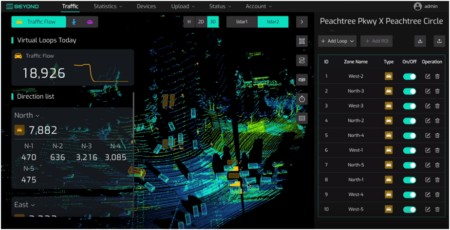To highlight its expertise in connected vehicle technology, at last week’s 25th ITS World Congress, Chinese telecommunications giant Huawei Technologies launched the world’s first commercial C-V2X (cellular vehicle-to-everything) roadside unit (RSU) supporting LTE Uu and PC5 concurrence.
Based on 3GPP R14 LTE-V2X technology, Huawei’s RSU is a roadside network device that can support low-latency V2X data broadcasting, enabling intelligent traffic management and automated driving. The technology aims to help road operators, government transportation and public safety departments, industry and operator customers, improve road traffic efficiency and highway safety.
As the world’s first, it successfully supports data exchange over Uu and PC5 interfaces to ensure safe communications. Wired and wireless access modes are used to flexibly connect road facilities, such as traffic signal controllers, facilitating project deployment. Huawei’s RSU also supports the US-based Global Positioning System (GPS) and China’s BeiDou Navigation Satellite System (BDS). Due to the RSU, the latency over PC5 is less than 20ms, and supports 20MHz bandwidth of the 5.9GHz waveband, which is the frequency deployed by most countries for intelligent transportation systems (ITS).
Over the past few years, Huawei has conducted several joint trials and participated in research projects along with auto makers in Europe and Asia aimed at improving the efficiency and reliability of vehicle-to-vehicle communications (V2V) and vehicle-to-infrastructure (V2I) using mobile broadband technology.
Achieving the goal of fully connected traffic will involve teaching vehicles to communicate with each other and exchange data directly. Direct communication between vehicles provides information about what is happening in a variety of situations, such as in parts of an intersection not visible to the driver, around a building corner, or in the driver’s blind spots.
The V2X technology makes it possible for cars to communicate with other vehicles and their surroundings using LTE cellular connectivity. These scenarios, together with new applications derived from the Internet of Things (IoT), will generate an enormous amount of data that needs to be communicated back and forth at very low latencies. Unlocking the potential of this massive flow of data will lead to the creation of innovative new services and applications that will ultimately lead to smarter and more intelligent transportation infrastructure and management.
In the plenary keynote presentation at the World Congress, Veni Shone, president of Huawei’s LTE and C-V2X product line, shared the company’s views on ITS, particularly cellular V2X.
“After 20 years of developing the connecting vehicle, there are currently more than 100 million vehicles connected,” noted Shone.
“Currently few road facilities are connected. We want to facilitate road digitization by connecting more road facilities such as traffic lights, cameras, traffic signs, making roads and vehicles more interactive.
“Huawei sees the need for roads to be digitized and connected in order to interact with vehicles and produce more valuable use cases.”
Shone added, “It is not possible for one company or one organization to make this happen. In order for this ecosystem to truly thrive, it requires the efforts of all parties, from both ITS and ICT sectors, as well as all related organizations and companies. We welcome partners to join our collaborative efforts and help bring intelligent transportation and connected vehicles to reality.”




